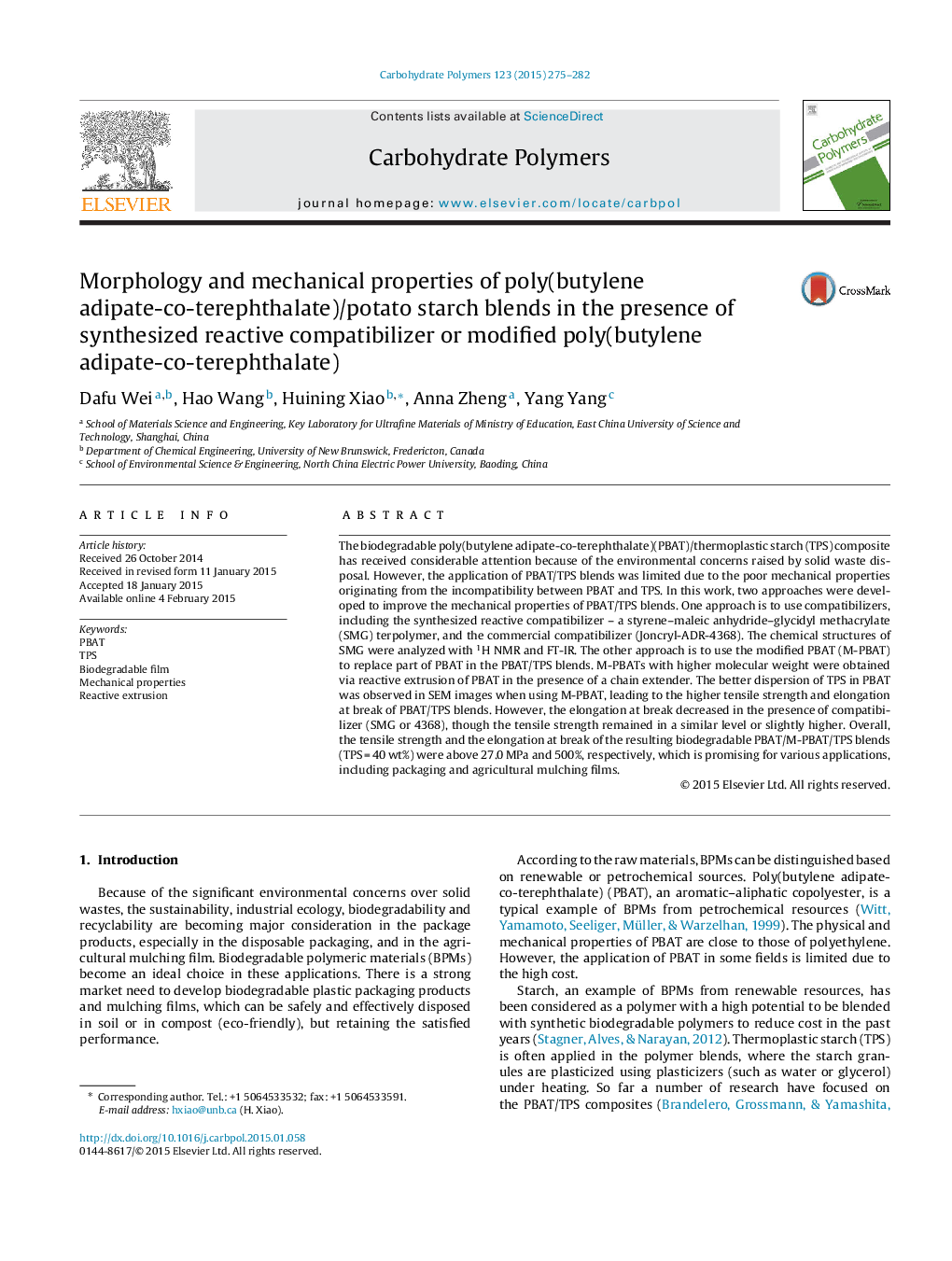| Article ID | Journal | Published Year | Pages | File Type |
|---|---|---|---|---|
| 7789069 | Carbohydrate Polymers | 2015 | 8 Pages |
Abstract
The biodegradable poly(butylene adipate-co-terephthalate)(PBAT)/thermoplastic starch (TPS) composite has received considerable attention because of the environmental concerns raised by solid waste disposal. However, the application of PBAT/TPS blends was limited due to the poor mechanical properties originating from the incompatibility between PBAT and TPS. In this work, two approaches were developed to improve the mechanical properties of PBAT/TPS blends. One approach is to use compatibilizers, including the synthesized reactive compatibilizer - a styrene-maleic anhydride-glycidyl methacrylate (SMG) terpolymer, and the commercial compatibilizer (Joncryl-ADR-4368). The chemical structures of SMG were analyzed with 1H NMR and FT-IR. The other approach is to use the modified PBAT (M-PBAT) to replace part of PBAT in the PBAT/TPS blends. M-PBATs with higher molecular weight were obtained via reactive extrusion of PBAT in the presence of a chain extender. The better dispersion of TPS in PBAT was observed in SEM images when using M-PBAT, leading to the higher tensile strength and elongation at break of PBAT/TPS blends. However, the elongation at break decreased in the presence of compatibilizer (SMG or 4368), though the tensile strength remained in a similar level or slightly higher. Overall, the tensile strength and the elongation at break of the resulting biodegradable PBAT/M-PBAT/TPS blends (TPSÂ =Â 40Â wt%) were above 27.0Â MPa and 500%, respectively, which is promising for various applications, including packaging and agricultural mulching films.
Related Topics
Physical Sciences and Engineering
Chemistry
Organic Chemistry
Authors
Dafu Wei, Hao Wang, Huining Xiao, Anna Zheng, Yang Yang,
